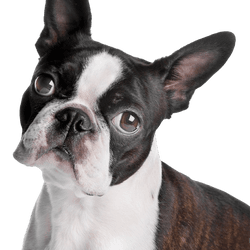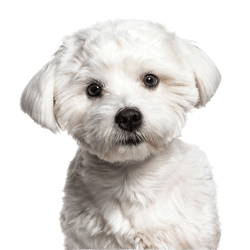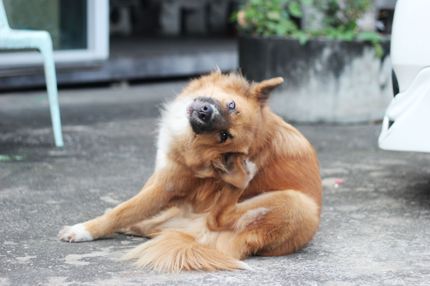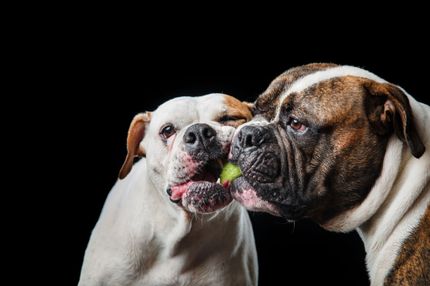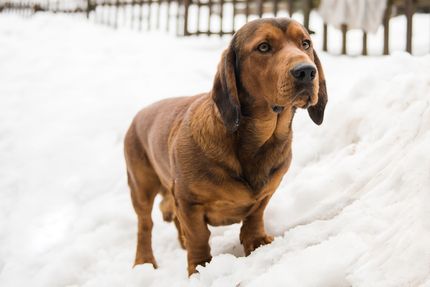Facts & Origin
Boston Malterrier: A lively mix of Boston Terrier and Maltese.
The Boston Malterrier is a mixed breed that combines the charming and energetic characteristics of the Boston Terrier with the gentle, loving nature of the Maltese. This unique combination makes them an excellent choice for families and individuals looking for a loyal, playful, and easy-to-train companion.
Origin and History
The Boston Terrier and Maltese mix is a relatively new breed whose exact history is difficult to trace. Their parent breeds, however, the Boston Terr ier and the Maltese, both have a long and distinguished history. The Boston Terrier originated in the United States and was bred in the late 19th century. The Maltese, which can be traced back to ancient times, originated in the Mediterranean region.
The Boston Malterrier is a loyal and loving companion that quickly wins the hearts of dog lovers with its playful nature and ability to learn. It is ideal for those seeking low maintenance but high payback in the form of love and loyalty.
| Alternate Name | - |
| Origin | USA - Malta |
| Life expectancy | 10 - 15 years |
| Care requirements | low-maintenance - high-maintenance |
| Activity level | average - low |
| FCI group | not recognised |
| AKC group | not recognised |
| KC group | not recognised |
More Boston Terrier mixes
More Maltese mixes
Attitude, character and temperament of the breed
Possible character traits of the Boston Malterrier
Boston Malterriers are known for their kindness, energy and intelligence. They are excellent family dogs and get along well with children and other pets. Their size makes them suitable for apartment dwellers as well as homeowners.
Dogs of this breed are also easy to train and respond well to positive reinforcement. They are great for first-time owners because they are less dominant and headstrong than other breeds. In addition, they require only a moderate amount of exercise to stay happy and healthy.
Summary
- Breed: Boston Malterrier (Boston Terrier x Maltese mix)
- Origin: USA and Mediterranean
- Temperament: Loving, energetic, intelligent
- Suitability: Families, individuals, apartment dwellers
- Trainability: High (responds well to positive reinforcement)
- Exercise requirement: Moderate
Character
Usage
Genetically predisposed diseases
Because the Boston Malterrier is a mixed breed, they are less susceptible to many of the genetic diseases that can affect pure breeds. However, they may still inherit some health problems that are common in their parent breeds.
Breathing problems: Like many breeds with short faces, Boston Terriers can suffer from brachycephaly, a condition that can lead to breathing problems.
Eye disorders: Both parent breeds can be prone to certain eye problems, such as cataracts and glaucoma.
Hip dysplasia: This condition, in which the hip joint is not properly formed, can occur in both breeds and can lead to pain and difficulty moving.
Care of the Boston Malterrier
Coat Care: The coat of the Boston Malterrier is relatively low maintenance. Regular brushing is enough to keep it healthy and shiny. If they have inherited the Maltese's longer coat, more grooming might be necessary.
Bathing and Nail Care: They should be bathed regularly to ensure their coat and skin remain healthy. Their nails should also be checked regularly and trimmed as needed.
Dental Hygiene: As with all dogs, attention should be paid to the Boston Malterrier's dental hygiene. Regular brushing can help prevent tartar buildup and gum problems.
Exercise: Boston Malterriers are active dogs and need adequate daily exercise. This helps keep them physically healthy and mentally stimulated.
What does this mixed breed look like?
As a mixed breed, the Boston Malterrier can have characteristics of both parent breeds, the Boston Terrier and the Maltese. They tend to be small to medium sized dogs, with weights varying from 5 to 11 kilograms. Coat color can be a variety of shades, including white, black, brown, and mixtures thereof. Their coat is often short and smooth, similar to the Boston Terrier, but can also be slightly longer and silkier, as in the Maltese. Their face can have either the short, beefy appearance of the Boston Terrier or the longer, finer face of the Maltese.
| Fur length | short - long |
| Fur | flat coated |
| Ear shape | Standing Ears - Triangle |
| Tail | stubby - fanned out |
| Anatomy | muscular, dainty |
| Size ♀ | 20 - 44 cm |
| Weight ♀ | 3 - 10 kg |
| Size ♂ | 21 - 43 cm |
| Weight ♂ | 3 - 11 kg |
| Suitable For | Children, Beginner, Seniors |
Known Diseases
Shortness of breath
Difficult breathing can be recognized by the dog's rattling and sometimes accelerated breathing rate.
Patellar problems
Problems with the Patellar can be a displacement or weak kneecap, which is one of the most common causes of lameness in dogs, also because of overweight.
Eye diseases
Often occur with allergies and intolerances.
Spinal disorders
However, as the dog ages, this elasticity can be lost and completely inhibited by diseases such as spondylosis.
Skin inflammations
Can be hereditary in certain breeds.
Heart disease
Can occur frequently in dogs and can sometimes be treated with medication.
FAQ
-
This mixed breed is adaptable and has the same energy levels as Boston Terriers but is lighter than a pure Boston Terrier. They are also very lovable and easy to train.
-
They are usually small to medium sized dogs, varying in weight from 5 to 11 kilograms.
-
This hybrid breed, like all dogs, needs a lot of cuddles and love to be healthy and happy. They also need regular brushing to maintain their coat.
-
Yes, they can be problematic if left alone. They need attention and interactions, especially in the early years.
-
Although this hybrid breed is not particularly prone to diseases, they can suffer from some genetic conditions such as respiratory problems, ear infections and eye diseases. It is always advisable to make regular visits to the vet to detect and treat such problems early.
